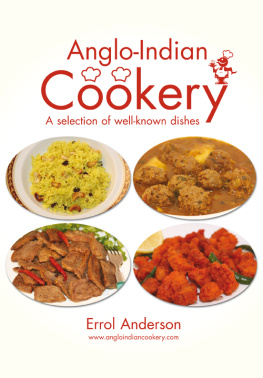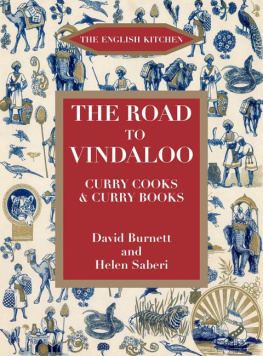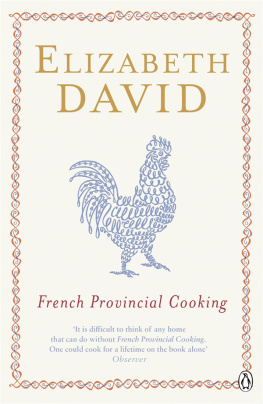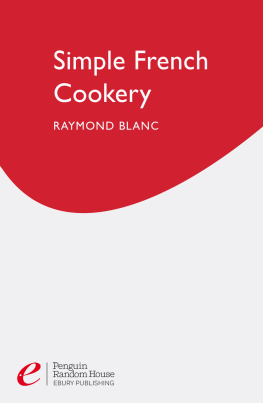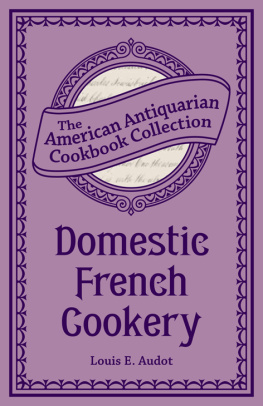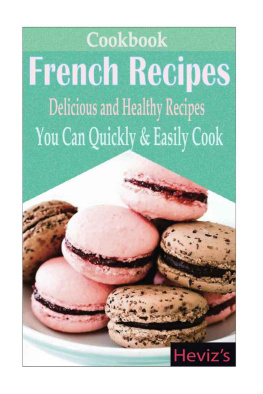The Art of
COOKERY
Made Plain and Easy
THE REVOLUTIONARY 1805 CLASSIC
Hannah Glasse
DOVER PUBLICATIONS, INC.
Mineola, New York
Bibliographical Note
This Dover edition, first published in 2015, is a newly reset, unabridged republication of the first American edition, originally published by Cottom & Stewart, Alexandria, Virginia, in 1805. The work was originally published in England in 1747. For this edition, some archaic spellings have been modernized and several typographical errors have been tacitly corrected.
Library of Congress Cataloging-in-Publication Data
Glasse, Hannah, 17081770.
The art of cookery made plain and easy : the revolutionary 1805 classic / Hannah Glasse.
pages cm
Originally published: Alexandria, Va. : Cottom and Stewart, 1805, the American edition of the work originally published in England in 1747.
Includes index.
Summary: Revised and republished many times since its 1747 debut, this cookbook was a bestseller in England and the United States for more than 100 years. Author Hannah Glasse dismisses French cookery as fussy and expensive, focusing instead on standards of Anglo-American cuisine. Simple dishes, from soups to cakes, feature straightforward directions Provided by publisher.
eISBN-13: 978-0-486-80576-4
1. Cooking, EnglishEarly works to 1800. I. Title.
TX705.G54 2015
641.5942dc23
2015004152
Manufactured in the United States by Courier Corporation
79576401 2015
www.doverpublications.com
The Art of Cookery
Made Plain and Easy
Excelling any Thing of the Kind ever yet published.
CONTAINING
| Directions how to Market; the Season of the Year for Butchers Meat, Poultry, Fish, &c. | Pies. Variety of Dishes for Lent, which may be made Use of any other Time. |
| How to roast and boil to Perfection every Thing necessary to be sent up to Table. | Gravies. Sauces. Hashes. Fricassees. |
| Vegetables. | Ragouts. |
| Broiling. | To cure Hams, Bacon, &c. |
| To dress Fish. | Pickling. |
| Made Dishes. | Making Cakes. |
| Poultry. | Jellies. |
| Soups and Broths. | Preserving. |
| Puddings. | &c. &c. &c. &c. |
Also, the ORDER of a BILL of FARE for each MONTH, in the Manner the Dishes are to be placed upon the Table, in the present Taste.
The Art of Cookery
Made Plain and Easy
I Believe I have attempted a branch of Cookery which nobody has yet thought worth their while to write upon: but as I have both seen, and found by experience, that the generality of Servants are greatly wanting in that point, I therefore have taken upon me to instruct them in the best manner I am capable; and, I dare say, that every Servant who can but read, will be capable of making a tolerable good Cook; and those who have the least notion of Cookery, cannot miss of being very good ones.
I do not pretend to teach professed Cooks, my design being to instruct the ignorant and unlearned, (which will likewise be of use in all private families.) and that in so full and plain a manner, that the most ignorant Person, who can but read, will know how to do Cookery well. As Marketing must be the first branch of Cookery, I shall begin with that Table first.
HOW TO MARKET,
And the Seasons of the Year for Butchers Meat, Poultry, Fish &c.
BUTCHERS MEAT.
To choose Lamb.
IN a fore-quarter of lamb mind the neck-vein: if it be an azure blue, it is new and good; but if greenish or yellowish, it is near tainting, if not tainted, already. In the hinder-quarter, smell under the kidney, and try the knuckle: if you meet with a faint scent, and the knuckle be limber, it is stale killed. For a lambs head, mind the eyes; if they be sunk or wrinkled, it is stale; if plump and lively, it is new and sweet. Lamb comes in in April, and holds good till the end of August.
Veal.
IF the bloody vein in the shoulder looks blue, or of a bright red, it is new killed; but if blackish, greenish, or yellowish, it is flabby and stale: if wrapped in wet cloths, smell whether it be musty or not. The loin first taints under the kidney; and the flesh, if stale killed, will be soft and slimy.
The breast and neck taints first at the end, and you will perceive some dusky, yellowish, or greenish appearance; the sweetbread on the breast will be clammy, otherwise it is fresh and good. The leg is known to be new by the stiffness of the joint; if limber, and the flesh seems clammy; and has green or yellowish specks, it is stale. The head is known as the lambs. The flesh of a bull-calf is more red and firm than that of a cow-calf, and the fat more hard and curdled.
Mutton.
IF the mutton be young, the flesh will pinch tender; if old, it will wrinkle, and remain so; if young, the fat will easily part from the lean; if old, it will stick by strings and skins; if ram-mutton, the fat feels spongy, the flesh close-grained and tough, not rising again when dented with your finger; if ewe mutton, the flesh is paler than wether-mutton, a closer grain, and easily parting. If there be a rot, the flesh will be palish, and the fat a faint whitish, inclining to yellow, and the flesh will be loose at the bone. If you squeeze it hard, some drops of water will stand up like sweat. As to the newness and staleness, the same is to be observed as by lamb.
Beef.
IF it be right ox-beef, it will have an open grain; if young, a tender and oily smoothness: if rough and spongy, it is old, or inclining to be so, except the neck, brisket and such parts as are very fibrous, which in young meat will be more rough than in other parts. A carnation, pleasant colour betokens good spending meat; the suet a curious white; yellowish is not so good.
Cow-beef is less bound and closer grained than the ox, the fat whiter, but the lean somewhat paler; if young, the dent you make with your finger will rise again in a little time.
Bull-beef is of a close grain, deep dusky red, tough in pinching, the fat skinny, hard, and has a rammish rank smell; and for newness and staleness, this flesh bought fresh has but few signs, the more material is its clamminess, and the rest your smell will inform you. If it be bruised, these places will look more dusky or blackish than the rest.
Pork.
IF it be young, the lean will break in pinching between your fingers; and if you nip the skin with your nails, it will make a dent; also if the fat be soft and pulpy, in a manner like lard; if the lean be tough, and the fat flabby and spongy, feeling rough, it is old, especially if the rind be stubborn, and you cannot nip it with your nails.
If of a boar, though young, or of a hog gelded at full growth, the flesh will be hard, tough, reddish, and rammish of smell; the fat, skinny and hard; the skin very thick and tough, and, pinched up, will immediately fall again.
As for old and new killed, try the legs, hands, and springs, by putting your finger under the bone that comes out: for if it be tainted, you will there find it by smelling your finger; besides the skin will be sweaty and clammy when stale, but cool and smooth when new.
If you find little kernels in the fat of the pork, like hail-shot, if many, it is measly, and dangerous to be eaten. Pork comes in in the middle of August, and holds good till Lady-day.
How to choose Brawn, Venison, Westphalia Hams, &c.


